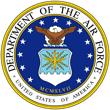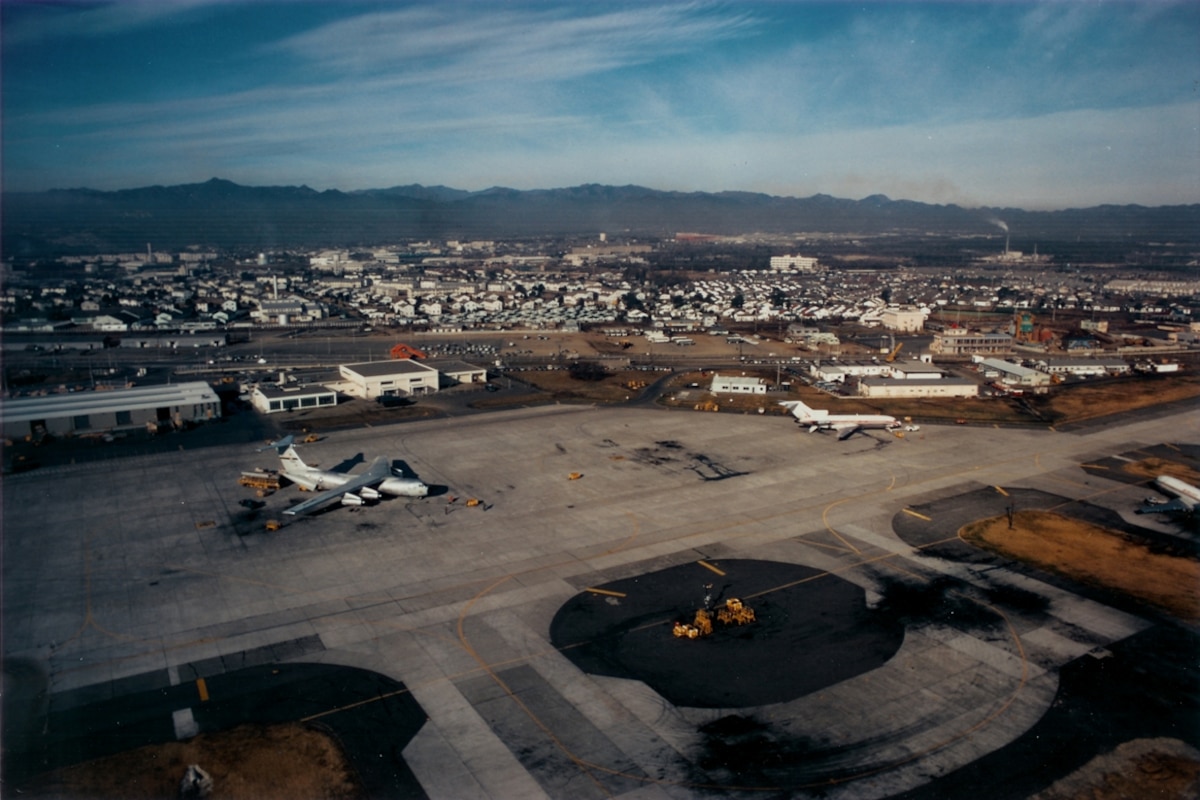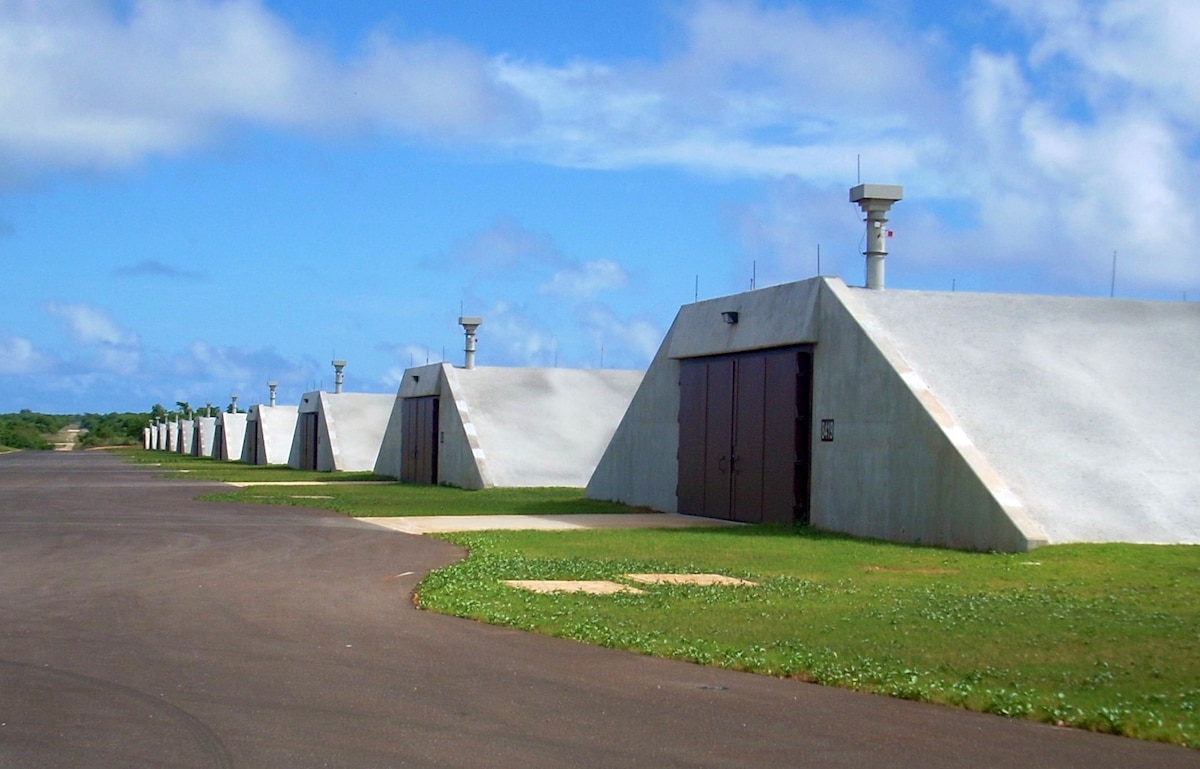Into the Future Skies: The Modernization Throughout the Pacific
From the strategic airfields of World War II to the Cold War era's nuclear deterrence, and the support bases of the Vietnam War, the Pacific has witnessed the Air Force's enduring commitment to projecting power and safeguarding allies. Pacific Air Forces’ modernization efforts demonstrates its unwavering dedication to adapting, innovating and maintaining its edge in an ever-evolving world. These endeavors encompass not only the enhancement of physical infrastructure but also the embracement of green technologies and the cultivation of partnerships that ensure continued air space superiority in the Pacific for years to come.
The History
Without physical infrastructure, there wouldn't be an Air Force. For many years, the first Air Force bases used grass fields or semi-prepared air strips since the combination of aircraft weight, tire pressure, and soil conditions required nothing more of a runway.
As aircraft became more technologically sophisticated and increased in weight, and military leaders employing them began demanding all-weather operations, the requirements in the development of runways and support facilities increased. The increased provisions evolved into the need for a full-fledged air base, with the standard training airfield design in World War I consisting of 50 buildings to support 100 aircraft, 150 student pilots, and their instructors.
During World War II, infrastructure in the Pacific became an integral part of the Air Force's air superiority. United States Army Air Forces built airfields on islands like Guam and Tinian to launch bombing raids against Japanese targets. These airfields also served as refueling and repair stations for Allied aircraft.
As aircraft became more technologically sophisticated and increased in weight, and military leaders employing them began demanding all-weather operations, the requirements in the development of runways and support facilities increased. The increased provisions evolved into the need for a full-fledged air base, with the standard training airfield design in World War I consisting of 50 buildings to support 100 aircraft, 150 student pilots, and their instructors.
During World War II, infrastructure in the Pacific became an integral part of the Air Force's air superiority. United States Army Air Forces built airfields on islands like Guam and Tinian to launch bombing raids against Japanese targets. These airfields also served as refueling and repair stations for Allied aircraft.
During the Cold War, the Air Force continued to use infrastructure in the Pacific to project military power and deter potential adversaries. For example, the United States built strategic air bases on Guam and in other parts of the region, which could be used to launch nuclear strikes against the Soviet Union or other adversaries.
During the Vietnam War, the Air Force used infrastructure in the Pacific to support military operations in Southeast Asia. Air bases were built in Thailand to launch bombing raids against North Vietnam.
Yokota’s Path Forward
Year after year, mission after mission, facilities degrade for a variety of reasons. In 2011, Yokota Air Base was deeply affected by a tsunami that wiped out much of the infrastructure throughout Japan. The resulting damage to the nation's electrical grid spurred the expectation of summertime power shortages, spelling bad news for Yokota AB due to its populace’s reliance on air conditioning in the warm season. The DoD saw an opportunity to apply newer technologies while rebuilding the base.
Yokota AB has entered a 21-year, $403 million contract with Schneider Electric to focus on 19 different energy conservation measures. Among those includes a microgrid-enabled 10-megawatt combined heat and power plant to offset the base’s demand on the local electrical grid. Though the project won’t rid the entire installation of carbon emissions, it will be a large step toward a greener future.
06:02
Watch on DVIDS
Robert Rose, 374th Civil Engineering Squadron Chief of Portfolio Optimization, oversaw the implementation of the multi-faceted project.
“A big piece to this is that we have to have a guaranteed performance of energy conservation measures or what we call ECMs,” Rose said. “That's what basically pays for this contract. It’s projected to save around $12.3 million per year in energy and water cost savings, resulting in a 29.3% reduction in energy costs across the identified facilities.”
Teams conducted walkthroughs of more than 400 buildings on the installation to align the project changes with practical needs and applications for the different missions throughout the installation. Under the contract, other central energy infrastructure is projected to receive a makeover, and building automation will be expanded and consolidated with all facilities also receiving lighting and plumbing upgrades. Even more impressive is the ability to go into what the installation refers to as “island mode”.
“We can isolate the base from the local power grid, which is provided by the Tokyo Electric Power Company, and the combined heat and power plant will produce its own power,” Rose said. “That's all based on our fuel supply, so that can go for days, weeks or months.”
“A big piece to this is that we have to have a guaranteed performance of energy conservation measures or what we call ECMs,” Rose said. “That's what basically pays for this contract. It’s projected to save around $12.3 million per year in energy and water cost savings, resulting in a 29.3% reduction in energy costs across the identified facilities.”
Teams conducted walkthroughs of more than 400 buildings on the installation to align the project changes with practical needs and applications for the different missions throughout the installation. Under the contract, other central energy infrastructure is projected to receive a makeover, and building automation will be expanded and consolidated with all facilities also receiving lighting and plumbing upgrades. Even more impressive is the ability to go into what the installation refers to as “island mode”.
“We can isolate the base from the local power grid, which is provided by the Tokyo Electric Power Company, and the combined heat and power plant will produce its own power,” Rose said. “That's all based on our fuel supply, so that can go for days, weeks or months.”
But what does that mean? What kind of impact does that have on operations and adversary deterrence in the Pacific?
“We have a dynamic and flexible infrastructure that can quickly adapt to changing energy needs and potential threats to the power supply,” Rose said. “This is particularly important in the event of a natural disaster or other world events which can disrupt the local power supply. You have a switch, and then we can still continue our mission even if things outside the fence line aren't so good.”
The ability to sustain an operational tempo without compromise or disruptions to energy needs outside any perimeter is an incredible deterrent for any adversary. This not only ensures operational success for the Air Force and its allies, but also provides a layer of reliable security in the region.
“We have a dynamic and flexible infrastructure that can quickly adapt to changing energy needs and potential threats to the power supply,” Rose said. “This is particularly important in the event of a natural disaster or other world events which can disrupt the local power supply. You have a switch, and then we can still continue our mission even if things outside the fence line aren't so good.”
The ability to sustain an operational tempo without compromise or disruptions to energy needs outside any perimeter is an incredible deterrent for any adversary. This not only ensures operational success for the Air Force and its allies, but also provides a layer of reliable security in the region.
The Spearhead: Andersen Air Force Base
Situated on the picturesque island of Guam, the spearhead of the Pacific, you'll find Andersen Air Base. As technology has advanced, the island's global reach has expanded in tandem. Notably, Andersen Air Base has undergone a significant infrastructure modernization, primarily seen in its investment in the airfield.
Part of the project consists of the upgrading of the Air Force’s largest munitions storage area with the construction of new reinforced munitions storage magazines, also known as “igloos.” The $28.9 million upgrade allows for the ability to increase munitions storage capabilities necessary to maintain a high level of airpower, lethality and readiness in the Indo-Pacific theater.
Part of the project consists of the upgrading of the Air Force’s largest munitions storage area with the construction of new reinforced munitions storage magazines, also known as “igloos.” The $28.9 million upgrade allows for the ability to increase munitions storage capabilities necessary to maintain a high level of airpower, lethality and readiness in the Indo-Pacific theater.
Also getting a facelift is the runway. Starting with its humble beginnings in 1945 and supporting airframes like the B-36, B-47, and B-52 during the Cold War, the base has grown to support today’s sophisticated bombers and fighters. The recent expansion aimed to accommodate larger aircraft and bolster its capacity for various military operations. The previous runway, composed of asphalt with crushed coral, was sturdy but slippery in wet conditions. The new runway enhances weight-bearing capability and length, facilitating takeoffs and landings for strategic bombers, cargo planes, and more, thereby strengthening the base's regional power projection and security.
In a move to enhance command and control capabilities, Andersen Air Base has heavily invested in its communication and command centers. These upgrades involve integrating secure networks and infrastructure for efficient data sharing, real-time communication, and seamless coordination of military operations. These enhanced command centers significantly bolster the base's agility in monitoring and responding to regional developments promptly and precisely.
In a move to enhance command and control capabilities, Andersen Air Base has heavily invested in its communication and command centers. These upgrades involve integrating secure networks and infrastructure for efficient data sharing, real-time communication, and seamless coordination of military operations. These enhanced command centers significantly bolster the base's agility in monitoring and responding to regional developments promptly and precisely.
Guardians of the East: Air Bases in Korea
In the heart of the Korean Peninsula lies a vital stronghold for the U.S. Air Force, Osan and Kunsan Air Bases. Standing as sentinels of strategic airpower in the region, their importance goes well beyond asphalt runways and towering hangars; they symbolize the unwavering commitment to maintain stability, defend allies, and project strength.
The significance of these air bases extends well beyond their immediate defense capabilities. They serve as physical manifestations of the partnership and interoperability between the U.S. and South Korean armed forces, fostering cooperation and enhancing joint capabilities.
One of the largest modernizations in F-16 history is currently taking place at Osan Air Base. The aircraft is implementing its first wave of 22 modifications designed to improve the F-16’s lethality to meet the needs of current and future operations.
“Avionics upgrades allow pilots to take full advantage of the jet's advanced weapons and sensors, said Capt. Michael C. Durham, 8th Operations Support Squadron, Weapons Tactics Officer. “It [The sensor array] is capable of providing high speed data and high-resolution video and ultimately aids the pilot in tactical decision making.”
The significance of these air bases extends well beyond their immediate defense capabilities. They serve as physical manifestations of the partnership and interoperability between the U.S. and South Korean armed forces, fostering cooperation and enhancing joint capabilities.
One of the largest modernizations in F-16 history is currently taking place at Osan Air Base. The aircraft is implementing its first wave of 22 modifications designed to improve the F-16’s lethality to meet the needs of current and future operations.
“Avionics upgrades allow pilots to take full advantage of the jet's advanced weapons and sensors, said Capt. Michael C. Durham, 8th Operations Support Squadron, Weapons Tactics Officer. “It [The sensor array] is capable of providing high speed data and high-resolution video and ultimately aids the pilot in tactical decision making.”
“The upgraded radar, specifically, allows us to track a greater number of targets at longer ranges in both cooperative and non-permissive environments while also improving the F-16’s all-weather capabilities,” he added. “The improvements will give F-16 pilots extra data that will help them identify, locate and engage targets, expanding leaders’ options in contingency planning to support national security objectives.”
Aligning with the unit's mission of ”Take the Fight North,” the upgrades play a big part in deterrence for the region alongside keeping pace with near-peer threats. Becoming more lethal and survivable can deter any aggression, encouraging a “pick up the phone and talk” approach instead of “pulling the trigger” strategy.
The journey of modernization in the Pacific region reflects the Air Force's steadfast dedication to adapting, innovating, and maintaining its edge in an ever-evolving world. By investing in advanced infrastructure, the adoption of sustainable technologies and fostering partnerships, the Air Force ensures its ability to project power, safeguard allies and deter aggression in the Pacific region for the foreseeable future.
Aligning with the unit's mission of ”Take the Fight North,” the upgrades play a big part in deterrence for the region alongside keeping pace with near-peer threats. Becoming more lethal and survivable can deter any aggression, encouraging a “pick up the phone and talk” approach instead of “pulling the trigger” strategy.
The journey of modernization in the Pacific region reflects the Air Force's steadfast dedication to adapting, innovating, and maintaining its edge in an ever-evolving world. By investing in advanced infrastructure, the adoption of sustainable technologies and fostering partnerships, the Air Force ensures its ability to project power, safeguard allies and deter aggression in the Pacific region for the foreseeable future.



